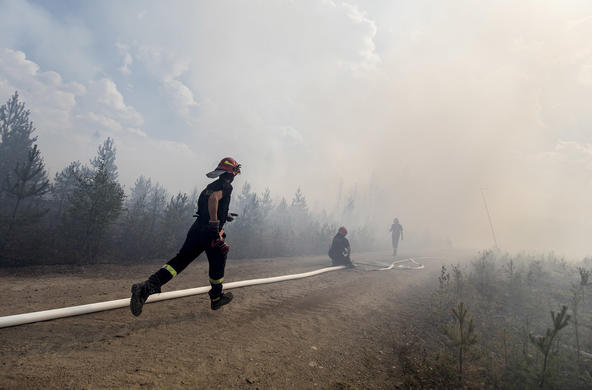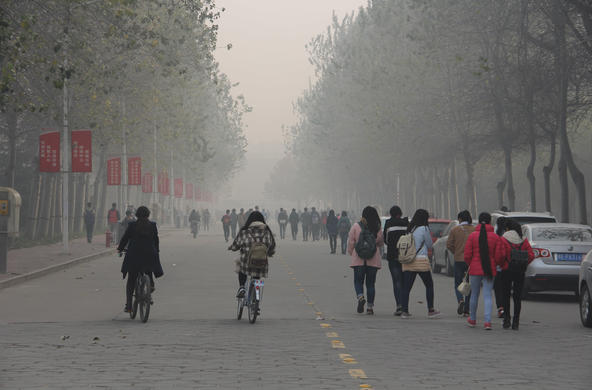The Earth functions like a giant still. Water evaporates from the equatorial regions and moves through the atmosphere, north and south. At least 80 percent of the excess heat received in the tropics is carried through the atmosphere to polar regions. At the poles, snowfall accumulates in the giant ice packs on Greenland and Antarctica, which contain the largest accumulations of freshwater on Earth. Some of this water has been stored for a million years.
It should not be surprising that other volatile substances evaporate in warm regions and condense in colder areas. Despite its high atomic weight, mercury is a volatile metal. Mercury is emitted to the atmosphere by a variety of natural and human-caused processes in the equatorial and temperate zone. There are relatively few sources of mercury in polar regions, yet high concentrations of this pollutant are often found in the animals that live there.
At least some of the mercury found in the Arctic appears to be transported there by evaporation in warm areas and condensation in cold areas. Then, when polar ice melts seasonally, the mercury is released to seawater, accumulates in the phytoplankton and fish, and eventually makes its way to seals and polar bears that are “top” predators, along with the traditional human populations that inhabit the far north.
Transport of mercury through the atmosphere is an example of what we mean by a global biogeochemical cycle. It is “bio” because mercury is transformed by microbes and a potential toxin to organisms in high concentrations. It is “geo” because mercury is contained in rocks and released when rocks weather or humans mine rich deposits. And, of course, it is “chemical” because mercury is one of the 92 natural chemical elements in the periodic table.
One can only understand the global distribution of mercury and its accumulation in habitats that we might expect to be pristine by understanding where it is released, how it is transported, and how it is deposited in polar regions. By virtue of its vapor phase, mercury has enhanced global transport. You can find other metals, such as lead, copper and vanadium, in Greenland snow, but they are largely found as particles carried through the atmosphere.
The Arctic and Antarctic have never been without some mercury, transported as vapor, and condensing at high latitudes. Concentrations of mercury in the Greenland snowpack have increased since the beginning of the Industrial Revolution, showing the impact of humans on its global cycle. And concentrations of mercury and pesticides in the animals that live in the polar regions are a living index of the widespread human pollution of nature.
References
Bond, A.L., K.A. Hobson, and B.A. Branfireun. 2015. Rapidly increasing methyl mercury in endangered ivory gull (Pagophila eburnean) feathers over a 130-year record. Proceedings of the Royal Society of London B doi: 10.1098/4spb.2015.0032
Obrist, D., Y. Agnan, M. Jiskra, C.L. Olson, D.F. Colegrove, J. Hueber, C.W. Moore, J.E. Sonke, and D. Helmig. 2017. Tundra uptake of atmospheric elemental mercury drives Arctic mercury pollution. Nature 547: 201-4.
Streets, D.G., M.K. Devane, Z. Lu, T.C. Bond, E.M. Sunderland, and D.J. Jacob. 2011. All-time releases of mercury to the atmosphere from human activities. Environmental Science and Technology 45: 10485-10491.
Weiss, H.V., M. Koide, and E.D. Goldberg. 1971. Mercury in a Greenland ice sheet: Evidence of recent input by man. Science 174: 692-694.







